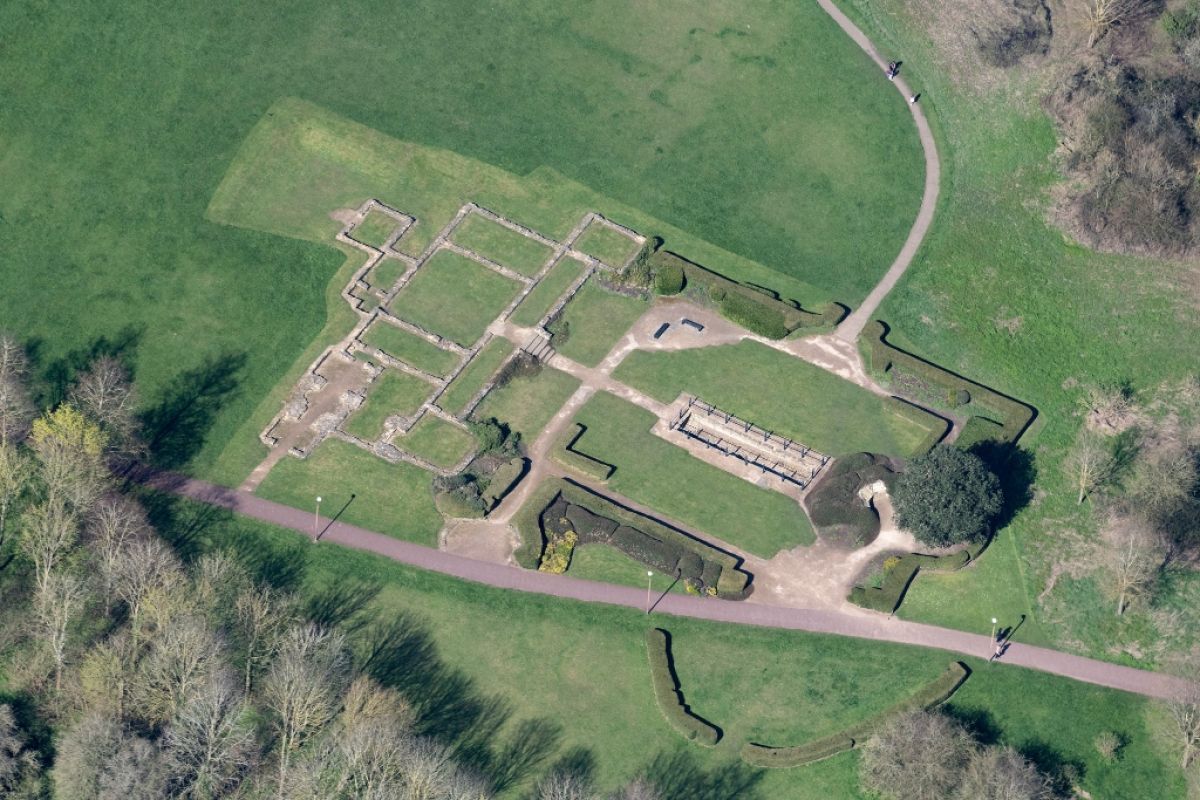The Romans were the first to create pleasure gardens in Britain. Julius Caesar visited Britain in 55 BC, although he was not impressed... He only went there to trade, and he observed that the locals did not even grow corn and that they just lived on flesh and milk and wore skins, but their climate was milder than his own and allowed the locals to grow a lot of plants that were different from the ones grown in Rome.
Archeologists excavated a 1st-century villa built by the Romans near Chichester. It was a large rectangular building with a central courtyard enclosed by a colonnade. There were gravel paths, fountains, and pavements made of marble. Hedges bordered garden beds. Seaweed was used as fertilizer.
Excavations at a villa near Reading unearthed evidence of roses, violets, and vegetables such as celery, carrots, and peas. At a Roman villa in Buckinghamshire, carbonized seeds in the soil showed that dill, coriander, anise, and opium poppy were grown. Violets flavored Roman wine and were also used in garlands at religious festivals. Dill was in the garlands of their heroes.
Garden scenes were typically painted on their indoor walls, as well. So, it is apparent that the Romans while in England enjoyed their gardens.
This is Moya Andrews, and today we focused on 1st century gardens.










